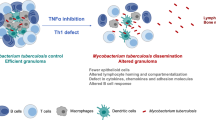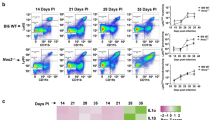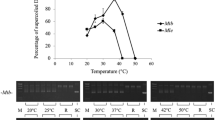Abstract
THE failure to grow the leprosy bacillus, Mycobacterium leprae, in vitro means that there is a requirement for a highly susceptible experimental animal model. The only animal confirmed so far as naturally highly susceptible is the nine-banded armadillo, of which at least some specimens develop, after inoculation, a disseminated disease which resembles human lepromatous leprosy1. The inoculation of M. leprae into the footpads of mice results in a localised, self-limiting infection, with a maximum bacillary yield of about 106.5 organisms per footpad2. Suppression of the immune response of the mouse, by thymectomy and irradiation, results in enhancement of the footpad infection, and dissemination of M. leprae bacilli to internal organs and peripheral tissue such as ears, nose and tail3. This ability to enhance infection by nonspecific depression of T-cell function suggests that the congenitally athymic, or nude, mouse might provide a suitable, naturally susceptible host for M. leprae. In spite of the severe impairment of the cellular immune response of nude mice4–7, the only report of the growth of M. leprae in such mice concluded that there was no significant increase in bacillary proliferation, and no tendency to promote a generalised infection8. This conclusion was based, however, on observations made only 6 months after inoculation—an interval that is almost certainly too short for detection of significant enhancement or dissemination.
This is a preview of subscription content, access via your institution
Access options
Subscribe to this journal
Receive 51 print issues and online access
$199.00 per year
only $3.90 per issue
Buy this article
- Purchase on Springer Link
- Instant access to full article PDF
Prices may be subject to local taxes which are calculated during checkout
Similar content being viewed by others
References
Kirchheimer, W. F., and Storrs, E. E., Int. J. Lepr. 39, 693–702 (1971).
Shepard, C. C., Int. J. Lepr., 30, 291–306 (1962).
Rees, R. J. W., Waters, M. F. R., Weddel, A. G. M., and Palmer, E., Nature, 215, 599–602 (1967).
Manning, D. M., Reed, N. D., and Schaffer, C. F., J. exp. Meet., 138, 488–494 (1973).
Wortis, H. H., Clin. exp. Immun., 8, 305–317 (1971).
Pennycuick, P. R., Transplantation, 11, 417–418 (1971).
Rouse, B. T., Rollinghoff, M., and Warna, N. L., Eur. J. Immun., 3, 218–224 (1973).
Prabhakaran, K., Harris, E. B., and Kirchheimer, W. F., Experientia, 31, 784 (1975).
Clark, H. F., and Shepard, C. C., J. Bact., 86, 1057–1069 (1963).
Holmes, I. B., and Hilson, G. R. F., J. med. Microbiol., 5, 251–261 (1972).
Kirchheimer, W. F., Storrs, E. E., and Binford, C. H., Int. J. Lepr., 40, 229–242 (1972).
Convit, J., and Pinardi, M. E., Int. J. Lepr., 40, 130–132 (1972).
Miles, A. A., and Misra, S. S., J. Hyg., 38, 732 (1938).
Author information
Authors and Affiliations
Rights and permissions
About this article
Cite this article
COLSTON, M., HILSON, G. Growth of Mycobacterium leprae and M. marinum in congenitally athymic (nude) mice. Nature 262, 399–401 (1976). https://doi.org/10.1038/262399a0
Received:
Accepted:
Published:
Issue Date:
DOI: https://doi.org/10.1038/262399a0
Comments
By submitting a comment you agree to abide by our Terms and Community Guidelines. If you find something abusive or that does not comply with our terms or guidelines please flag it as inappropriate.



